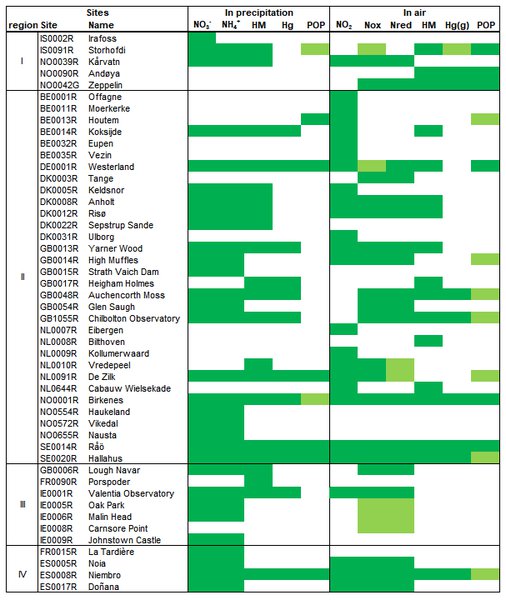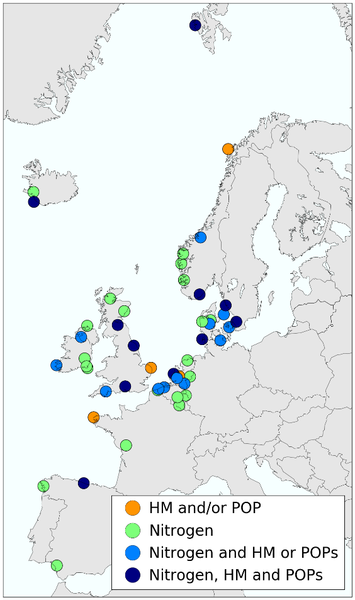Deposition of air pollutants around the North Sea and the North-East Atlantic in 2017
Executive Summary
This report presents the results of monitoring undertaken by OSPAR Contracting Parties for the Comprehensive Atmospheric Monitoring Programme (CAMP) during 2017. Under the CAMP, OSPAR Contracting Parties are committed to monitoring, on a mandatory basis, the concentrations of a range of metals, organic compounds and nutrients in precipitation and air. The CAMP also encourages OSPAR Contracting Parties to monitor, on a voluntary basis, additional compounds (such as certain persistent organic pollutants). The report gives detailed information on observed atmospheric inputs of selected contaminants to the OSPAR maritime area and its regions during 2017.
Region II, the Greater North Sea, remains the most intensely observed sub-region. Sub-regional coasts that are most underrepresented are the Irish Sea (Region III), the Bay of Biscay (Region IV), and the far north-east (Region I).
All Contracting Parties except Portugal, reported data for 2017. For most Parties some elements are missing to comply completely with the monitoring obligation defined by CAMP.
The regional distribution of the various pollutants shows in general elevated levels closest to main source areas, though there is some variability with a few sites, which may be more influenced by local or nearby sources.
Time trends show decrease in nitrogen, heavy metals and regulated POPs in accordance with the general emission reductions achieved in Europe the last decades.


Table 2.1 and Figure 2.1: Monitoring sites reporting, reduced and oxidised nitrogen compounds, heavy metals (HM), mercury and persistent organic pollutants (POPs) to CAMP in 2017.



